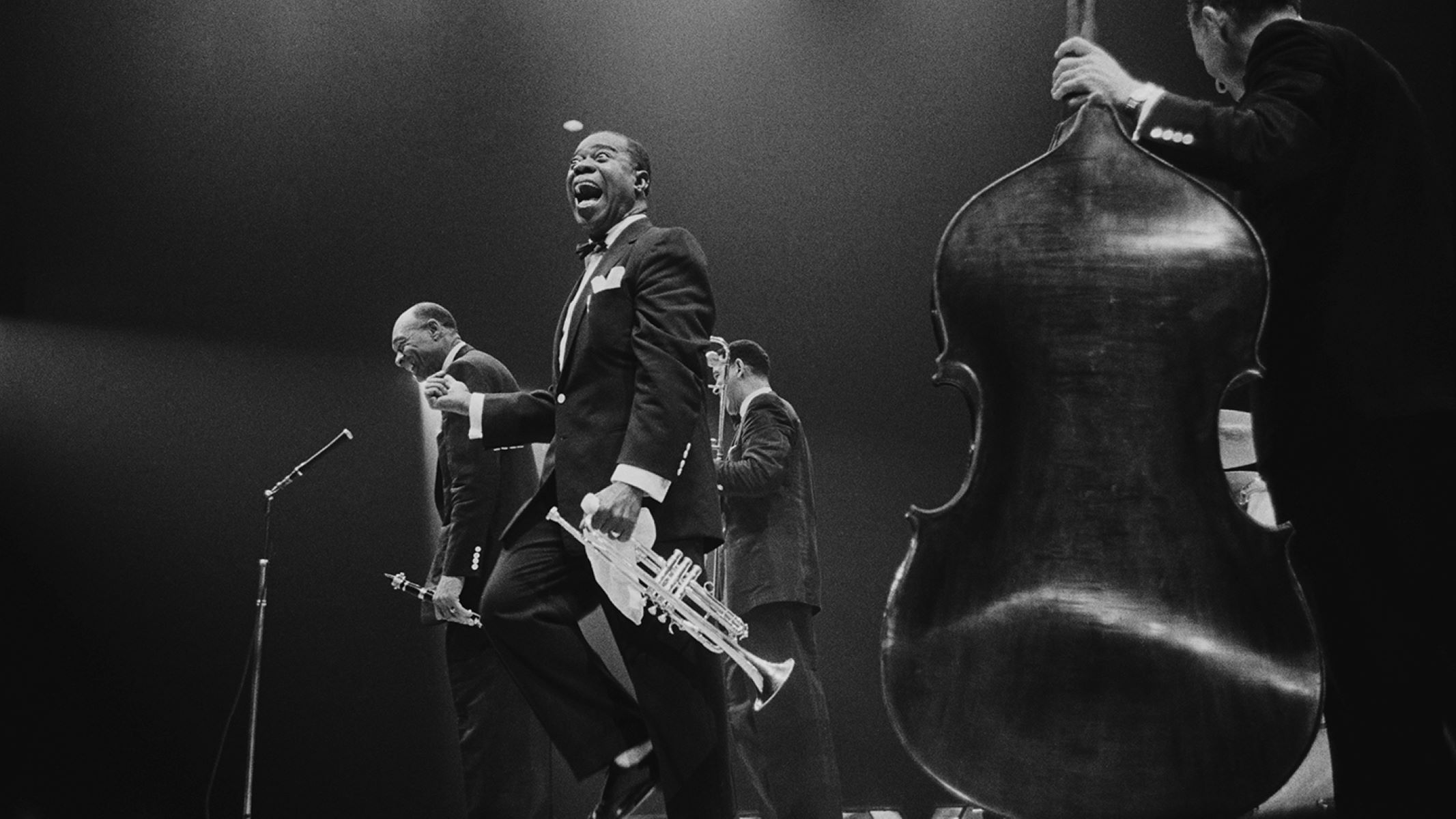

Jazz
What Are Jazz Chords
Modified: January 29, 2024
Learn the fundamentals of jazz chords and their importance in jazz music. Discover how to incorporate jazz chords into your playing and create a unique sound.
(Many of the links in this article redirect to a specific reviewed product. Your purchase of these products through affiliate links helps to generate commission for AudioLover.com, at no extra cost. Learn more)
Table of Contents
Introduction
Welcome to the fascinating world of jazz chords! Jazz is a genre of music that is known for its improvisation, complexity, and rich harmonies. At the heart of this harmonic complexity are the jazz chords, which play a crucial role in defining the sound and character of jazz music.
Jazz chords are different from the chords used in other popular music genres. They often feature more complex and extended chord structures, incorporating altered tones and unique voicings. Understanding jazz chords is essential for any musician or music enthusiast looking to dive into the captivating world of jazz.
In this article, we will explore the fundamentals of jazz chords, covering everything from basic chord theory to common chord progressions and chord symbols. Whether you are a beginner or an experienced musician, this guide will provide you with a solid foundation to navigate the intricate universe of jazz chords.
By the end of this article, you will have a better understanding of jazz chords and how they are used in jazz music. So, grab your instrument of choice, sit back, and get ready to delve into the enchanting realm of jazz chords!
Understanding Chords
Before diving into jazz chords, it’s important to have a basic understanding of chords in general. Chords are a combination of three or more notes played simultaneously, creating a harmonic foundation for a piece of music. They provide structure, color, and emotion to the music.
In traditional music theory, chords are built upon the concept of tertian harmony, which means they are constructed using intervals of thirds. This means that the notes of a chord are stacked in intervals of a third above each other.
The most common type of chord is a triad, which is made up of three notes – the root, the third, and the fifth. The root is the starting note of the chord, while the third and the fifth determine the quality of the chord – whether it’s major or minor.
In jazz, however, chords can be much more complex than triads. They often incorporate additional tones, such as seventh, ninth, eleventh, and thirteenth. These extended chords add richness and color to the harmonies, creating a distinctive jazz sound.
Understanding the construction of chords and their respective intervals is crucial for grasping the theory behind jazz chords. It allows musicians to navigate the harmonic landscape of jazz and create their own unique chord progressions and voicings.
Next, let’s delve deeper into the theory behind jazz chords, starting with the basics of chord theory.
Basic Chord Theory
At the core of jazz chords lies the foundation of chord theory. To understand jazz chords, it is essential to grasp the fundamentals of chord construction and the theory behind it. Let’s explore the basics of chord theory.
In Western music, chords are built upon the concept of tertian harmony, which means they are constructed using intervals of thirds. This means that the notes of a chord are stacked in intervals of a third above each other.
The most basic type of chord is a triad, which consists of three notes – the root, the third, and the fifth. The root is the starting note of the chord, while the third and the fifth determine the quality of the chord – whether it’s major or minor.
To illustrate, let’s take the C major triad as an example. The C major triad consists of the notes C, E, and G. The C is the root, the E is the third, and the G is the fifth. This triad has a major quality, as it follows the pattern of a major third between the root and the third, and a minor third between the third and the fifth.
In jazz, chords can feature extended structures, which means additional tones are added to the basic triad. These extended tones can include the seventh, ninth, eleventh, and thirteenth. For example, a Cmaj7 chord adds a major seventh to the C major triad, resulting in the notes C, E, G, and B.
Understanding the construction of chords and the intervals within them is crucial in jazz music. It allows musicians to build chord progressions, create various chord voicings, and navigate the harmonic complexities of jazz.
In the next section, we will explore different types of jazz chords, including triads, seventh chords, extended chords, and altered chords, and how these chords contribute to the unique sound of jazz music.
Triads
Triads form the foundation of jazz chords. They consist of three notes stacked in intervals of a third, providing the basic harmonic structure in music. In jazz, triads are often used as starting points to build more complex and extended chords.
There are four types of triads commonly used in jazz: major, minor, augmented, and diminished. Let’s explore each of these triads in more detail:
- Major Triad: The major triad consists of the root, major third, and perfect fifth. For example, a C major triad is comprised of the notes C, E, and G. Major triads have a bright and uplifting sound, often associated with feelings of happiness and positivity.
- Minor Triad: The minor triad consists of the root, minor third, and perfect fifth. For example, a C minor triad is made up of the notes C, Eb, and G. Minor triads have a melancholic and somber quality, often evoking feelings of sadness or introspection.
- Augmented Triad: The augmented triad consists of the root, major third, and augmented fifth. For example, a C augmented triad includes the notes C, E, and G#. Augmented triads have a distinct and unsettling sound, creating tension and dissonance.
- Diminished Triad: The diminished triad consists of the root, minor third, and diminished fifth. For instance, a C diminished triad is formed by the notes C, Eb, and Gb. Diminished triads have a mysterious and tense quality, often used to create dramatic and suspenseful moments in jazz compositions.
These triads can be used as building blocks to create chord progressions and add depth and flavor to jazz music. They can be played on various instruments, such as piano, guitar, and brass instruments, allowing musicians to explore different voicings and inversions to create unique sounds.
Now that you understand the basics of triads, we can move on to exploring seventh chords, which add an additional layer of complexity and depth to jazz harmonies.
Seventh Chords
In jazz music, seventh chords play a significant role in creating the characteristic harmonies and complexities that define the genre. Unlike triads, which consist of three notes, seventh chords incorporate a fourth note, the seventh, to enhance the richness and color of the chord.
There are four types of seventh chords commonly used in jazz: major seventh (maj7), dominant seventh (dom7), minor seventh (min7), and half-diminished seventh (min7b5). Let’s take a closer look at each of these seventh chords:
- Major Seventh Chord (maj7): The major seventh chord consists of the root, major third, perfect fifth, and major seventh. For example, a Cmaj7 chord is made up of the notes C, E, G, and B. Major seventh chords have a smooth and lush quality, often conveying a sense of warmth and sophistication.
- Dominant Seventh Chord (dom7): The dominant seventh chord consists of the root, major third, perfect fifth, and minor seventh. For instance, a C7 chord includes the notes C, E, G, and Bb. Dominant seventh chords have a strong and vibrant sound and are commonly used in blues and jazz progressions.
- Minor Seventh Chord (min7): The minor seventh chord consists of the root, minor third, perfect fifth, and minor seventh. For example, a Cmin7 chord is formed by the notes C, Eb, G, and Bb. Minor seventh chords have a soulful and introspective quality, often associated with mellow and melancholic jazz tunes.
- Half-Diminished Seventh Chord (min7b5): The half-diminished seventh chord consists of the root, minor third, diminished fifth, and minor seventh. For instance, a Cm7b5 chord includes the notes C, Eb, Gb, and Bb. Half-diminished seventh chords have a dark and mysterious sound, frequently used in jazz compositions for their unique dissonant and unresolved qualities.
Seventh chords are pivotal in jazz since they provide the foundation for improvisation, chord progressions, and harmonic movements. Jazz musicians often experiment with different voicings and inversions of seventh chords to create harmonic interest and capture the essence of the music.
Next, we will explore extended chords, which expand upon seventh chords by introducing additional tones and complexities to further enhance the jazz harmony.
Extended Chords
Extended chords are a vital component of jazz harmonies, adding even more complexity and richness to the sound. They go beyond the basic triads and seventh chords, incorporating additional tones or extensions that extend the chord structure.
There are several types of extended chords used in jazz, including ninth, eleventh, and thirteenth chords. Let’s examine each of these extended chords in more detail:
- Ninth Chords: Ninth chords are created by adding the ninth note above the root of a seventh chord. For example, a C9 chord would consist of the notes C, E, G, Bb, and D. Ninth chords have a sophisticated and jazzy sound, often used in comping and soloing to add color and tension to the music.
- Eleventh Chords: Eleventh chords involve adding the eleventh note above the root of a seventh chord. For instance, a C11 chord would include the notes C, E, G, Bb, D, and F. Eleventh chords have a unique and sometimes dissonant quality, highly favored in modal jazz and fusion music.
- Thirteenth Chords: Thirteenth chords are formed by adding the thirteenth note above the root of a seventh chord. A C13 chord, for example, would consist of the notes C, E, G, Bb, D, F, and A. Thirteenth chords have a lush and full-bodied sound, commonly used in jazz standards and compositions.
Extended chords provide a greater range of harmonic possibilities, adding color and complexity to jazz music. They are often used in chord progressions, substitutions, and improvisations, allowing musicians to create unique and intriguing sounds.
Exploring different voicings and inversions of extended chords is also common in jazz. This offers musicians an opportunity to experiment with chord textures and create interesting harmonic movements across the instrument.
Now that we have covered extended chords, let’s move on to understanding altered chords, which introduce additional chromatic tones to create even more tension and color within jazz harmonies.
Altered Chords
In jazz music, altered chords are a fascinating aspect of harmonic exploration. Altered chords take the concept of extended chords one step further by introducing chromatic alterations to specific tones within the chord structure. These alterations add unique tension and color, creating a distinct and captivating sound.
Typically, altered chords are associated with dominant chords (dom7) and are commonly used in jazz improvisation and chord progressions. The alterations involve raising or lowering certain chord tones, providing a sense of harmonic tension and dissonance.
The most commonly altered tones within a dominant chord are the fifth, ninth, and eleventh. Here are some of the common alterations:
- Sharp Five (#5): The sharp five alteration involves raising the fifth of a dominant chord. For example, a C7#5 chord would include the notes C, E, G#, and Bb. The sharp five alteration adds a sense of tension and instability.
- Flat Nine (b9): The flat nine alteration includes lowering the ninth of a dominant chord. For instance, a C7b9 chord would consist of the notes C, E, G, Bb, and Db. The flat nine alteration creates a darker and more dissonant sound.
- Sharp Nine (#9): The sharp nine alteration raises the ninth note of a dominant chord. For example, a C7#9 chord would include the notes C, E, G, Bb, and D#. The sharp nine alteration adds a heightened sense of tension and edginess.
- Flat Thirteen (b13): The flat thirteen alteration involves lowering the thirteenth of a dominant chord. For instance, a C7b13 chord would consist of the notes C, E, G, Bb, and Ab. The flat thirteen alteration creates a darker and grittier sound.
Altered chords provide a wide range of color and tension to jazz compositions and improvisations. Musicians often use these chords strategically to create harmonic interest and enhance a sense of unpredictability in their playing.
It is important to note that altered chords should be used with care and intention. The altered tones should complement the overall harmonic context and serve a specific purpose within the music.
Now that we have explored altered chords, let’s move on to discussing common jazz chord progressions and how these chords are used in practice.
Common Jazz Chord Progressions
Jazz music is renowned for its unique and captivating chord progressions. These progressions provide a framework for improvisation and serve as the building blocks for jazz compositions and performances. While there is an infinite number of chord progressions in jazz, certain progressions have become classics and are commonly used in the genre.
One of the most well-known jazz chord progressions is the ii-V-I progression. It is frequently used in many jazz standards and serves as a foundation for improvisation. The ii-V-I progression is built upon the chords of the second, fifth, and first degrees of a major scale.
For example, in the key of C major, the ii-V-I progression would involve the chords Dm7 (ii), G7 (V), and Cmaj7 (I). This progression provides a smooth and pleasing resolution as the dominant seventh chord (G7) leads back to the tonic (Cmaj7).
Another widely used jazz chord progression is the blues progression. The blues progression consists of twelve bars and follows a specific chord sequence, typically using dominant seventh chords. It is a fundamental progression in jazz, blues, and many other related genres.
For instance, in the key of C, a basic blues progression would include the chords C7, F7, and G7. These dominant seventh chords create a soulful and expressive sound that forms the foundation for blues and jazz improvisation.
Other common jazz chord progressions include rhythm changes, which are based on the chord changes of George Gershwin’s famous tune “I Got Rhythm,” and the Coltrane changes, which were popularized by legendary saxophonist John Coltrane and involve complex harmonic substitutions and rapid chord changes.
Understanding and familiarizing yourself with these common jazz chord progressions gives you the foundation to explore the vast world of jazz improvisation, composition, and collaboration. As you delve into jazz music, you will encounter countless variations and unique progressions that add to the richness and complexity of the genre.
Now that we have explored some common jazz chord progressions, let’s move on to discussing voicings and inversions, which play a crucial role in shaping the sound and character of jazz chords.
Voicings and Inversions
Voicings and inversions are essential concepts in jazz music that allow musicians to create unique and interesting chord textures and harmonies. They provide different ways of arranging the notes within a chord, offering flexibility and diversity in jazz chord playing.
Voicings refer to the specific arrangement and order of the notes within a chord. They can be played on different instruments, such as piano, guitar, or any other harmonic instrument. The choice of voicing greatly affects the overall sound and character of the chord.
In jazz, there are various voicings to explore, including root position voicings, close position voicings, drop 2 voicings, and many others. Each voicing has its own unique sound and effect on the chord, allowing musicians to choose the most suitable voicing for their musical intentions.
Inversions, on the other hand, involve changing the order of the notes within a chord so that a different note becomes the lowest or bass note. Inversions add variety and interest to chord progressions and can create smoother voice leading between chords.
For example, let’s consider a C major triad in root position with the notes C, E, and G. By inverting the chord, we can create different voicings such as the first inversion with the notes E, G, and C, or the second inversion with the notes G, C, and E. Each inversion offers a unique sound and allows for a wider range of melodic movement.
In jazz piano playing, voicings and inversions are particularly important. Jazz pianists often use extended voicings that include more than three notes, incorporating the ninth, eleventh, and thirteenth tones. These voicings create a richer and more complex harmonic texture, adding depth to the music.
Exploring different voicings and inversions is a valuable skill for jazz musicians. It enables them to bring out specific tones within chords, create smooth voice leading, and add their personal touch to the music.
Now that we have covered voicings and inversions, let’s move on to exploring jazz chord symbols, which are essential for communication and understanding in the world of jazz.
Jazz Chord Symbols
Jazz chord symbols are a shorthand system used to represent chords in jazz music. They provide a compact and efficient way of communicating chord progressions, allowing musicians to quickly understand and interpret the harmony of a piece.
Instead of writing out the full notation for each chord, jazz chord symbols use a combination of letters, numbers, and symbols to represent the chord quality, root note, and any additional alterations or extensions.
The first part of a jazz chord symbol represents the root note of the chord. It is represented by a letter, typically uppercase, which corresponds to the root of the chord. For example, “C” represents a C chord.
The second part of the symbol indicates the quality or type of the chord. Common symbols include:
- Maj or Δ for major chords. For example, “Cmaj7” represents a C major seventh chord.
- Min for minor chords. For example, “Cmin7” represents a C minor seventh chord.
- ° or ø for diminished chords. For example, “C°” or “Cø” represents a C diminished chord.
- 7 for dominant seventh chords. For example, “C7” represents a C dominant seventh chord.
In addition to the root and quality symbols, jazz chord symbols can also include alterations and extensions. Some common symbols for alterations and extensions include:
- # or ♭ for sharp or flat alterations. For example, “C7#9” represents a C dominant seventh chord with a sharp ninth.
- 9, 11, and 13 for extended tones. For example, “C9” represents a C ninth chord, “C11” represents a C eleventh chord, and “C13” represents a C thirteenth chord.
- Alt for altered or diminished fifth chords. For example, “C7alt” represents a C dominant seventh with altered tensions.
Jazz musicians are familiar with these symbols and can quickly interpret them to play the appropriate chords. They provide a common language for performers to communicate while improvising or reading from lead sheets.
Understanding jazz chord symbols is essential for any musician diving into the world of jazz. It allows for quick chord recognition, makes chord progressions and improvisation more accessible, and facilitates collaborative musical experiences.
Now that we have explored jazz chord symbols, let’s conclude our journey through jazz chords and their intricacies.
Conclusion
Congratulations! You have now taken a deep dive into the world of jazz chords and gained a comprehensive understanding of their foundations, complexities, and applications. Jazz chords are the backbone of the rich and vibrant harmonies that define the genre.
We covered the basics of chords, including triads and seventh chords, which form the building blocks of jazz harmony. From there, we explored extended chords, which add additional color and complexity, and altered chords, which introduce tension and chromaticism to jazz progressions.
We also discussed common jazz chord progressions, such as the ii-V-I and blues progressions, which provide the framework for improvisation and composition. Additionally, we explored the importance of voicings and inversions in shaping the sound and character of jazz chords.
Jazz chord symbols were also explored, as they are an essential tool for communication and understanding among jazz musicians. They allow for efficient representation of complex chord progressions and facilitate the collaborative nature of jazz performance.
As you continue your journey into jazz music, keep exploring and experimenting with different chords, progressions, voicings, and inversions. Play with the nuances of jazz chord symbols and discover your own unique style and expression within the world of jazz.
Remember, jazz is a genre that thrives on creativity, improvisation, and pushing boundaries. Use your newfound knowledge of jazz chords as a springboard to create your own unique sound and contribute to the ever-evolving jazz landscape.
So, grab your instrument and let the magic of jazz chords take you on a musical adventure filled with spontaneity, expression, and harmonic richness. Embrace the complexities and subtleties of jazz chords, and let them guide you into a world of endless possibilities.











